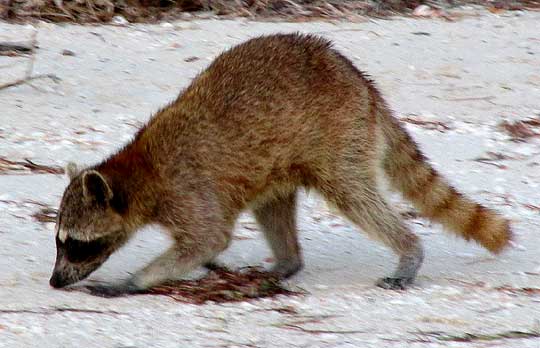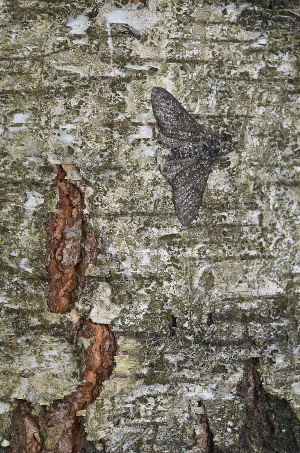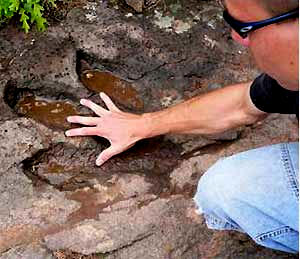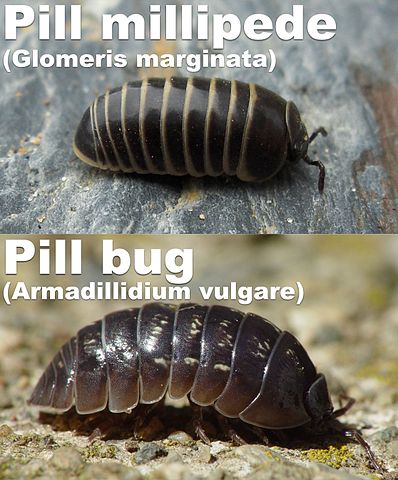WHAT IS EVOLUTION?
Biological evolution is the change in inherited traits over successive generations of populations of living organisms.
It's just that, and nothing more. When a virus develops new strains, it is evolving. When House Sparrows, Passer domesticus, were introduced into North America during the mid 1800s, they quickly spread continent-wide, as documented in a classic 1964 research paper by RF Johnston and RK Selander entitled House Sparrows: Rapid Evolution of Races in North America. North American House Sparrows are evolving.

Evolving populations usually change from simpler states to more complex ones. Thus, the first living things were one-celled or even simpler, but today the most complex organisms can think and create. On Earth, surely the most "highly evolved" organism is the human, because of the human brain, but other plants and animals also have amazing adaptations and capabilities.
It's useful to recognize two basic forms of biological evolution: Microevolution and macroevolutuion.
MICROEVOLUTION

If you're familiar with the bushy-tailed, roly-poly Raccoons of northern North America, you'll wonder at the relatively lanky, slender-tailed look of the Raccoon at the left. The skinny one is the same species as occurs up north, just that this one is sniffing along a muddy mangrove swamp beach in tropical Yucatan, Mexico. It happens that Bergmann's Rule (see our Ecological Rules page) asserts that geographic races of a species possessing smaller body size are found in the warmer parts of the range, and races of larger body size in cooler parts. This is an example of microevolution.
Microevolution refers to adaptive change
within a species.
EXAMPLES OF MICROEVOLUTION
from notes by Bonnie Dalzell
One example of "evolution as we watch" is the rapid adaptation of pest species to resist pesticides and herbicides. Another is the adaptation of weed grains that are harvested and replanted with desirable grains. Some wild grasses grow in fields of cultivated grains and the ripening times and seed weight have come to match the ripening time and seed weight of the desirable grains so that the weeds are cultivated along with the cultivated grains.
Bacteria evolve resistance to our antibiotics even more rapidly but they can assimilate genes from other bacteria by ingestion so their evolution takes a different course than the evolution of sexually reproducing, multicellular species.
In Europe there's a speckled moth called the Peppered Moth, Biston betularia. Among its members are very light-colored ones, and very dark-colored ones. That's one below, nicely camouflaged on a birch tree in Belgium:

Before the mid 1800s, pale-colored ones were by far the most common type encountered. Since they were less visible when resting on pale tree trunks, birds had a harder time seeing and eating them than they did the dark ones. However, then came the Industrial Revolution with its pollution, which covered tree trunks with dark soot. Then dark-colored moths became the most commonly produced form because they blended in best with the soot-covered tree trunks. This is an example of microevolution. A 2019 technical discussion of how this moth's microevolution takes place is available in a work by Arjen van't Hot and others, entitled Genetic convergence of industrial melanism in three geometrid moths.
MACROEVOLUTION

At the right, a picture of a dinosaur footprint in Utah reminds us that during the evolution of Life on Earth, more than 99 percent of all species that have ever existed on Earth now are extinct.
Macroevolution refers to the appearance and disappearance (extinction) of species through time.
What is the evidence for macroevolution? The evidence is abundant, and occurs in several fields:
- The fossil record: As our Fossil Page explains, usually fossils are deposited with the oldest ones at the lower levels of geological strata. As you dig deeper and deeper, you can watch species come and go through geological history, with the older species becoming simpler and simpler in structure. You might enjoy our Geological Time Scale page where you can see how different kinds of organisms arose and went extinct throughout Earth's evolutionary history.
- The molecular record: When you study the fossil record and figure out when new species arose from their ancestors, you see that the longer they have been separated in geological time, the more differences there are in their DNA (genetic material).
- Homology: This interesting word refers to the fact that related species share similar patterns of bodily structure. For instance, all animals with backbones share the same general pattern of bones, muscles, nerves, blood circulation and organs. Moreover, the arrangement of these things becomes more and more complex as one moves from the fishes to amphibians to reptiles and mammals. This suggests that over time progressive change has taken place.
- Embryo development: Developing embryos pass through stages (ontogeny) exhibiting traits of the species from which they arose. For example, human embryos have slits and arches in their necks like the gill slits and gill arches of fish, and later possess a tail. Human fetuses even possess a fine fur (the lanugo) during the fifth month of development.
- Vestigial structures: Many species retain structures that were important to the species from which they arose, but which no longer are useful. For example, the human appendix is what remains of the time when our ancestors needed a pouch off the large intestine for bulky food to be stored, perhaps where bacteria could break it down more before being sent on through the intestine. Think in terms of our primate ancestors eating roots, tough fruits and such.
- Convergent Evolution: Since a specific form or manner of being may be the best for exploiting a certain ecological niche, unrelated organisms in different parts of the world often evolve to look like one another. For example, in Australia many marsupial mammals have evolved to look strikingly like very unrelated placental mammals in other parts of the world. Australia's marsupial Tasmanian Wolf looks much like North America's placental Wolf. At the right, a millipede and a crustacean have evolved to look similar, though they're in completely different subphylums.
- Patterns of distribution: Charles Darwin pointed out that organisms living on oceanic islands resemble most closely the forms living on the nearest continent. That wouldn't make sense if all organisms were specially made, instead of having evolved from common ancestors.
 Human embryo, 7th week of pregnancy; image courtesy of Ed Uthman of Texas and Wikimedia Commons
Human embryo, 7th week of pregnancy; image courtesy of Ed Uthman of Texas and Wikimedia Commons Glomeris (millipede) and Armadillidium (crustean); image courtesy of "Kazvorpal" at English Wikipedia
Glomeris (millipede) and Armadillidium (crustean); image courtesy of "Kazvorpal" at English WikipediaAn interesting point about macroevolution is that its rate does not appear to have been taken place at a constant rate throughout evolutionary history. Macroevolution has proceeded in jerks; There were moments in time when it sped up, others when it slowed down. So far no general explanation for why this might be has been accepted by all scientists. You may like to see more on the pace of evolution .
In 2007, a study entitled Independently Evolving Species in Asexual Bdelloid Rotifers reported that though sexual reproduction had not occurred in a certain group of bdelloid rotifers for 40,000,000 years, the group has evolved into different species. In this group females lay eggs producing genetic clones of their mothers, and the species has no males. Therefore, sexual reproduction is not needed for evolution to take place and new species to arise.
Well, there's still a lot not understood about evolution. About the only fact accepted by all serious, unbiased researchers is this:
